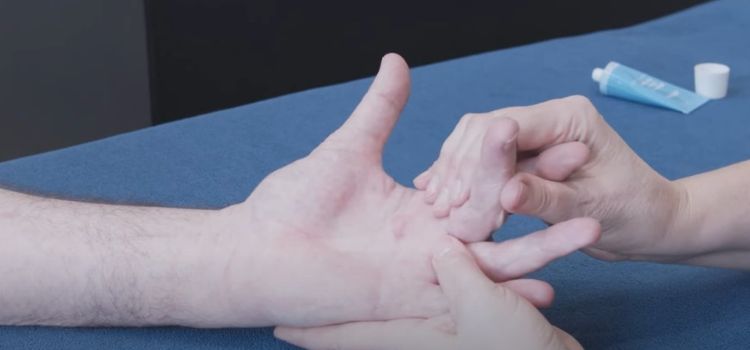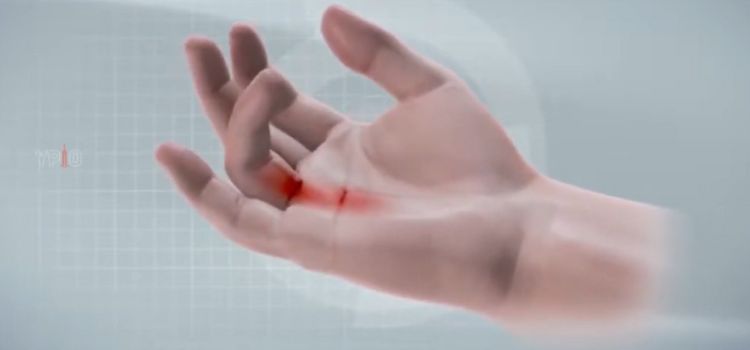Dupuytren contracture, a condition affecting the hand’s connective tissue, can result in finger contractures and limited hand mobility. Embracing stretching exercises as part of a management strategy becomes crucial in maintaining hand function and slowing down contracture progression. In this comprehensive guide, we explore Dupuytren contracture stretching exercises, their benefits, and the collaborative approach with medical professionals to enhance hand mobility.
Overview of Dupuytren Contracture Stretching Exercises

A. Alleviating Hand Contractures Through Targeted Stretches
Dupuytren contracture stretching exercises aim to alleviate hand contractures by focusing on stretching the affected tissue. These targeted stretches contribute to improved flexibility and may slow down the progression of finger contractures.
B. Benefits of Regular Stretching for Dupuytren Contracture
Regular stretching plays a crucial role in managing Dupuytren contracture symptoms. It helps maintain or improve hand range of motion, reduce discomfort, and enhance overall hand function.
C. Collaborative Approach with Medical Professionals
Incorporating stretching exercises into a comprehensive treatment plan often involves collaboration with medical professionals such as hand therapists or orthopedic specialists. This ensures a tailored approach that considers individual needs and the stage of Dupuytren contracture.
Benefits of Stretching for Dupuytren Contracture
A. Slowing Down Contracture Progression
Consistent stretching may contribute to slowing down the progression of Dupuytren contracture by addressing tightness in the affected tissue and promoting more extended range of motion.
B. Improving Hand Flexibility and Range of Motion
Stretching exercises are designed to enhance hand flexibility and improve range of motion, allowing individuals to perform daily activities with greater ease.
C. Easing Discomfort and Promoting Hand Function
Regular stretching can help alleviate discomfort associated with Dupuytren contracture, promoting better hand function and quality of life.
Basic Dupuytren Contracture Stretching Techniques
A. Passive Stretches for Gentle Extension
Passive stretching involves using the unaffected hand or an external force to gently extend the fingers, promoting flexibility in the affected hand.
B. Finger Abduction Exercises
Abduction exercises focus on separating the fingers, counteracting the contracture, and encouraging a broader range of motion.
C. Incorporating Heat Therapy for Enhanced Effectiveness
Applying heat to the affected hand before stretching exercises can enhance the effectiveness of stretches by increasing blood flow and promoting tissue flexibility.
Advanced Stretching Techniques for Increased Flexibility
A. Active Stretching Under Professional Guidance
Engaging in active stretching under the guidance of a hand therapist allows for controlled and targeted stretches to improve flexibility.
B. Utilizing Finger Splints for Controlled Stretching
Finger splints can be used to maintain a stretched position, providing a controlled and sustained stretch to the affected fingers.
C. Progressive Stretching Routines for Long-Term Results
Implementing progressive stretching routines, gradually increasing intensity, helps achieve long-term results in managing Dupuytren contracture symptoms.
Incorporating Stretching into Daily Routine
A. Consistency in Performing Stretches
Consistency is key in realizing the benefits of stretching exercises for Dupuytren contracture. Integrating stretches into a daily routine ensures ongoing maintenance of hand flexibility.
B. Finding the Right Balance with Other Therapies
Combining stretching exercises with other therapeutic approaches, such as hand exercises or medications, creates a holistic strategy for managing Dupuytren contracture.
C. Listening to the Body’s Response for Optimal Results
Paying attention to how the hand responds to stretching exercises allows for adjustments in intensity and technique, ensuring optimal results and minimizing discomfort.
Addressing Discomfort and Potential Challenges

A. Managing Discomfort During Stretching
Gentle and gradual stretching helps manage discomfort during exercises. If discomfort persists, individuals should communicate with their healthcare professionals for modifications.
B. Recognizing Individual Limitations and Adapting Exercises
Acknowledging individual limitations is crucial. Adapting stretches to suit personal comfort levels ensures a positive stretching experience.
C. Seeking Medical Advice for Personalized Guidance
Individuals are encouraged to consult with healthcare professionals for personalized advice and guidance, considering the unique characteristics of their Dupuytren contracture.
Tips for Maximizing Stretching Benefits
A. Gradual Progression for Sustainable Results
Gradually progressing in stretching intensity ensures sustainable results and reduces the risk of overexertion or strain.
B. Combining Stretching with Hand Exercises
Combining stretching with hand exercises enhances overall hand function, addressing multiple aspects of Dupuytren contracture management.
C. Celebrating Small Victories in Hand Mobility
Acknowledging and celebrating small improvements in hand mobility boosts motivation and encourages continued commitment to stretching routines.
Real-Life Testimonials: Experiences with Dupuytren Contracture Stretching
A. Stories of Improved Hand Function Through Consistent Stretching
Individuals share their experiences of improved hand function and mobility achieved through dedicated and consistent Dupuytren contracture stretching.
B. Overcoming Challenges and Adapting to a Stretching Routine
Testimonials highlight the journey of overcoming challenges and adapting to a stretching routine, demonstrating resilience in managing Dupuytren contracture.
C. Encouraging Others on Their Journey to Hand Freedom
Individuals who have benefited from stretching exercises extend encouragement to others embarking on their journey to hand freedom.
The Science Behind Dupuytren Contracture Stretching
A. How Stretching Impacts Collagen Formation
Exploring the physiological effects of stretching on collagen formation in the affected tissue and its role in managing Dupuytren contracture.
B. Research Findings on the Effectiveness of Stretching Exercises
Reviewing scientific research that supports the effectiveness of stretching exercises in addressing Dupuytren contracture symptoms.
C. The Role of Stretching in Preventing Contracture Recurrence
Understanding how regular stretching contributes to preventing the recurrence of contractures in individuals managing Dupuytren contracture.
Addressing Perplexity: Common Questions Answered
A. Can Stretching Completely Reverse Dupuytren Contracture?
Clarifying that while stretching may slow down progression and alleviate symptoms, complete reversal of Dupuytren contracture may not be achievable through stretching alone.
B. How Often Should Stretching Exercises Be Performed?
Providing guidance on the frequency of stretching exercises, emphasizing regularity for optimal benefits while considering individual comfort levels.
C. Are There Specific Stretches for Different Stages of Dupuytren Contracture?
Addressing the diverse stages of Dupuytren contracture and tailoring stretches to suit the specific needs and limitations of each stage.
Burstiness: Creative Approaches to Dupuytren Contracture Stretching
A. Incorporating Mindfulness in Stretching Routines
Suggesting the integration of mindfulness practices during stretching, enhancing the mind-body connection in Dupuytren contracture management.
B. Partner-Assisted Stretches for Added Support
Encouraging partner-assisted stretches for added support and a collaborative approach in managing Dupuytren contracture symptoms.
C. Customizing Stretches to Individual Preferences
Highlighting the importance of customizing stretches to individual preferences, making the stretching routine more enjoyable and sustainable.
Expert Perspectives: Hand Therapists and Medical Professionals
A. Insights on the Importance of Stretching in Dupuytren Contracture Management
Gaining perspectives from hand therapists and medical professionals on the integral role of stretching in comprehensive Dupuytren contracture management.
B. Tailoring Stretching Routines Based on Individual Cases
Understanding how healthcare professionals tailor stretching routines based on individual cases, ensuring personalized and effective management.
C. Collaborative Care for Comprehensive Hand Health
Exploring the collaborative approach between individuals and healthcare professionals for comprehensive hand health and optimal Dupuytren contracture management.
Conclusion
In conclusion, the journey to freedom of movement through Dupuytren contracture stretching exercises is a path of resilience, commitment, and empowerment. Regular stretching, when incorporated into a comprehensive management plan, can significantly contribute to maintaining hand function and improving overall quality of life. As individuals embrace the stretching routines outlined in this guide, the invitation is extended to share experiences, celebrate victories, and collectively build a supportive community on the road to hand freedom.


